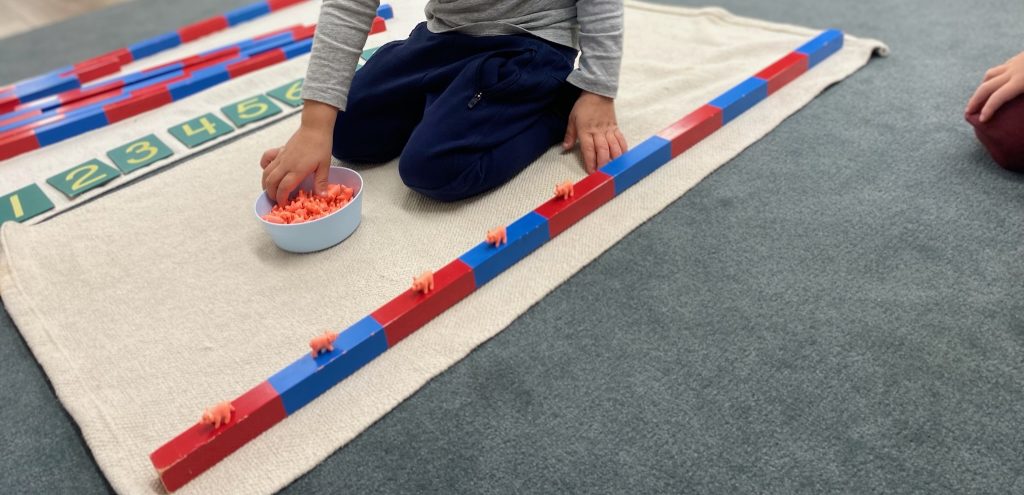
Look familiar? They should. The Number Rods follow almost the same initial presentation as the Red Rods, a perennial favorite in the Montessori classroom. While the Red Rods demonstrate the concept of length, the Number Rods use that same structure to introduce the child to early concepts of quantity and numeral. For the first presentation, the child counts the length of each rod from 1-10, placing his hand on the colored panel that corresponds to each quantity. By placing his hand, the child is able to “feel” the concept of quantity: each sequential quantity include the quantities that came before it. In other words, “four” includes “one,” “two,” and “three,” so the child moving his hand along the number rods as she counts touches “one,” “two,” and “three,” before landing on “four.” It seems like a simple concept, but the idea that quantities contain other quantities is foundational to mathematical operations. The Number Rods allows that concept to be internalized concretely.
The Number Rods are also the first time the child connects quantity with numeral, as illustrated here. After the child is able to place the rods in order and knows how to count each panel, she is invited to label the rods with numeral cards. When the child is able to demonstrate that she can match the numerals and quantities reliably, the rods offer another challenge, matching the number labels out of order. Ultimately, rods can be scattered around the room, challenging children to remember the quantities they’re seeking across the distance of the classroom. (If you’ve ever asked your child to go get her socks from her bedroom just to find out that she’s completely forgotten by the time she got there, you know how much of a challenge remembering across distances can be!) These games are often enjoyed by small groups of children (who like trying to make them as challenging as possible).
The extension of the Red Rods to the Number Rods demonstrates a foundational design principal in Montessori classrooms: the increasing complexity of concepts within familiar structures. In traditional education, this is described as a “spiral curriculum,” when children are able to come back to familiar ideas in increasingly challenging ways. The spiral supports children’s learning by balancing mastered concepts with new challenges and allowing the curriculum to unwind in manageable bites. In the Montessori classroom, each new concept is understood to be a compilation of all the concepts that comprise it. By giving the children the opportunity to master those comprising concepts, the new concept can be mastered more quickly and more thoroughly than you might otherwise expect. Look for this design across the classroom.
